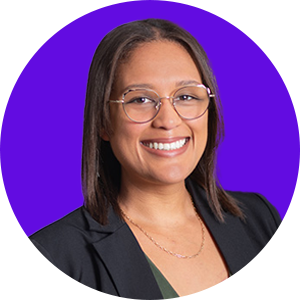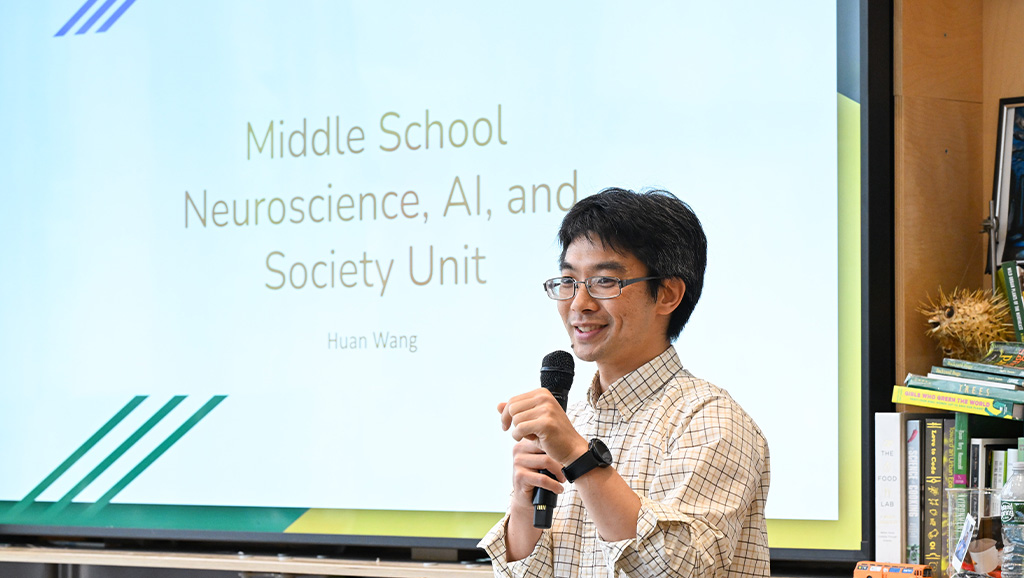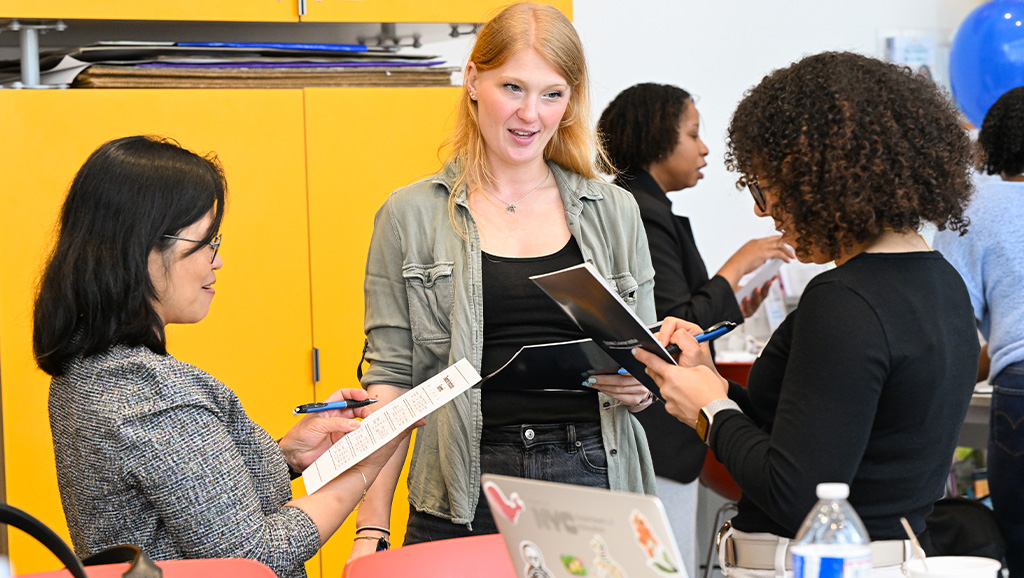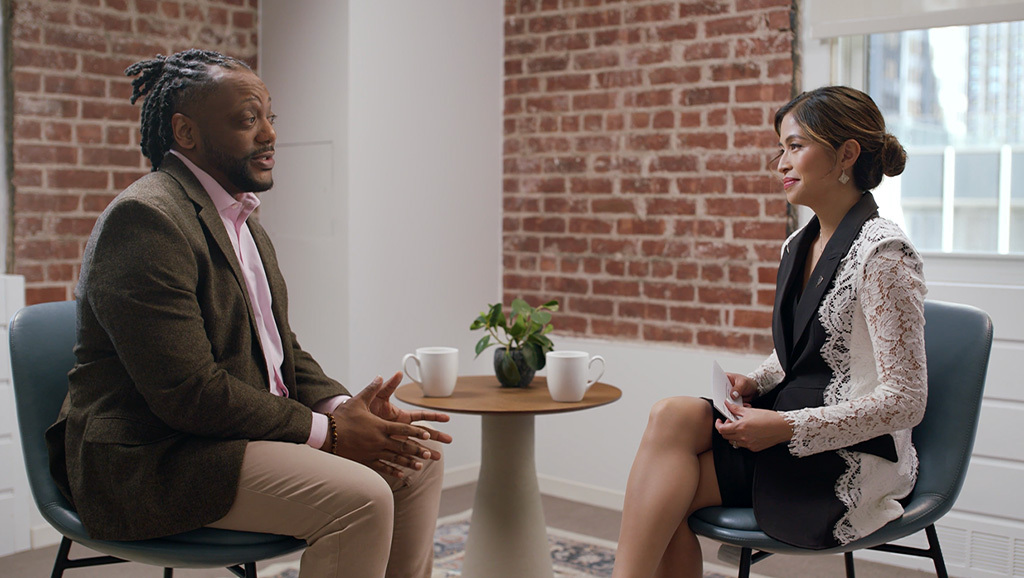News & Insights
From Learners to Leaders: Youth Led Conversation on the Brain and Society
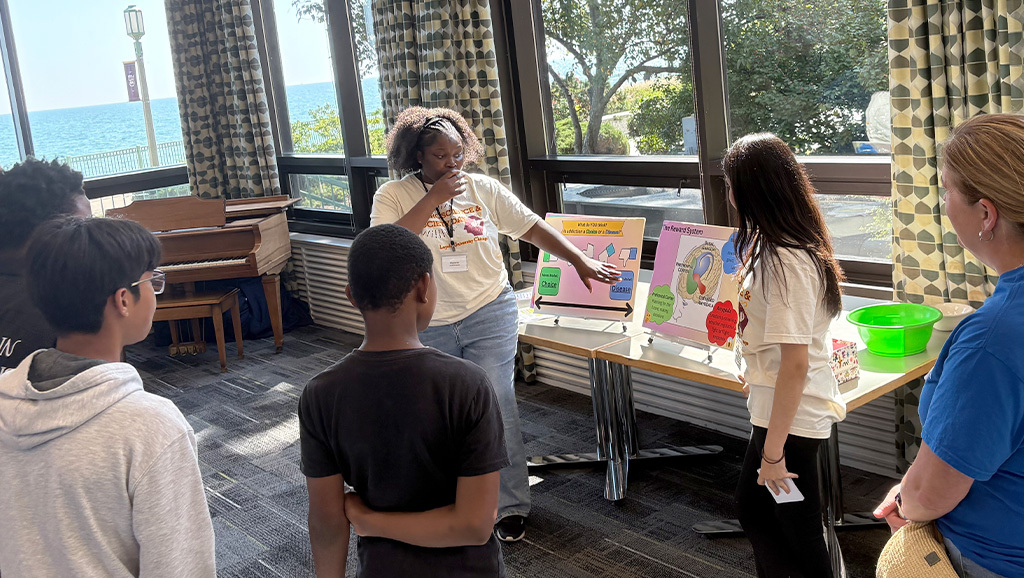
Held on Loyola University Chicago’s lakeside campus, Neuroscience & Society Day brought together high school and middle school students for a day of hands-on learning, reflection, and dialogue about how neuroscience connects to everyday life. The September event marked the culmination of this year’s ETHOS program, short for “Ethics-based Teaching Helps Optimize STEM,” a multi-stage neuroscience education program that merges neuroscience instruction with ethical inquiry, research experience, and student leadership.
By combining scientific learning with opportunities for mentorship and reflection, ETHOS responds to a growing need for educational programs that help young people understand not only how the brain works, but why that understanding matters for individuals and communities. The ETHOS program introduces high school students to core principles of neuroscience and STEM through a sequence of learning experiences that emphasize both discovery and reflection. The program begins with a series of after-school workshops that explore scientific concepts alongside their ethical and societal dimensions, encouraging students to consider how research in areas such as emotion, behavior, and neurotechnology intersects with everyday decision-making. Building on that foundation, participants advance to a summer component that combines laboratory internships, professional development, and leadership training. Throughout the summer, students practiced facilitating game-based activities to teach middle school learners about the brain, cultivating both scientific literacy and communication skills.
Neuroscience & Society Day served as the capstone experience of the ETHOS program, transforming high school participants from students into leaders. They led activity stations on topics such as traumatic brain injury, sensory processing, and the influence of smartphones and social media use on the brain.
In one station, students hosted “Socio-Environmental Factor Feud,” a fast-paced game that challenged middle schoolers to identify how factors such as sleep, nutrition, pollution, and stress affect brain health, which sparked discussion about how social and environmental conditions shape cognitive and emotional well-being. Another station, “Brain–Computer Interfaces,” introduced students to real-world examples of technologies that connect neural activity to machines and guided participants in reflecting on both the promise and ethical challenges of merging brains with technology.
Throughout the day, middle school participants recorded reflections on what they found most surprising or personally meaningful, with many expressing amazement at the brain’s ability to change based on experience and the idea that everyday actions can “train” the brain. The high school leaders, in turn, reflected on how teaching younger students deepened their understanding and strengthened their confidence in communicating complex ideas.
By positioning high school students as mentors and facilitators, Neuroscience & Society Day embodies a near-peer mentoring experience that creates a reciprocal learning environment with benefits for both age groups. As program leads Bill Rochlin and Elizabeth Wakefield explain, “[T]his program is designed to plant the seed that understanding the brain helps us understand ourselves and has broad implications for society.” Middle school participants gain exposure to relatable role models who make neuroscience approachable and relevant, while high school leaders strengthen their confidence, communication skills, and sense of agency.
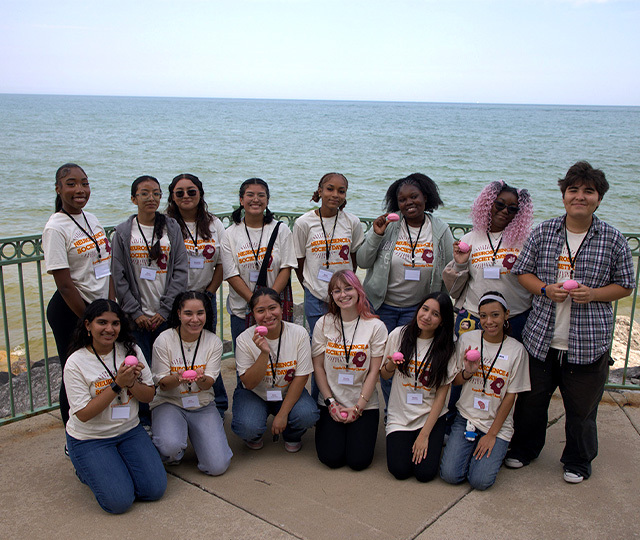

Photo courtesy of Loyola University Chicago.
Rochlin and Wakefield find that elevating high schoolers into leadership roles has a dual purpose: “Middle schoolers learn from role models close to their age, and high schoolers build their confidence and communication skills, and may be empowered to see themselves as leaders and educators.”
Neuroscience & Society Day reflects the Dana Education program’s commitment to empowering people to use neuroscience in their everyday lives through a deeper understanding of the field’s connection to people’s needs, values, and experiences. As Rochlin and Wakefield emphasize, Neuroscience & Society Day “builds awareness of the societal impact that findings about the brain can have, develops and strengthens STEM identity, and cultivates interest in pursuing STEM careers.” By blending scientific inquiry with reflection and mentorship, the program demonstrates how neuroscience education can extend beyond the classroom by helping students see the relevance of brain science to human experience and to society as a whole. Loyola hopes ETHOS will become a model that can be adapted and replicated by other communities, extending the reach of this approach and inspiring similar programs.
